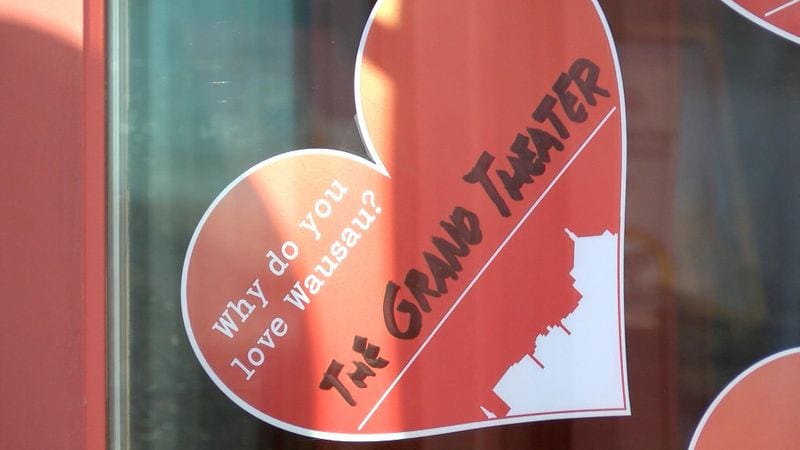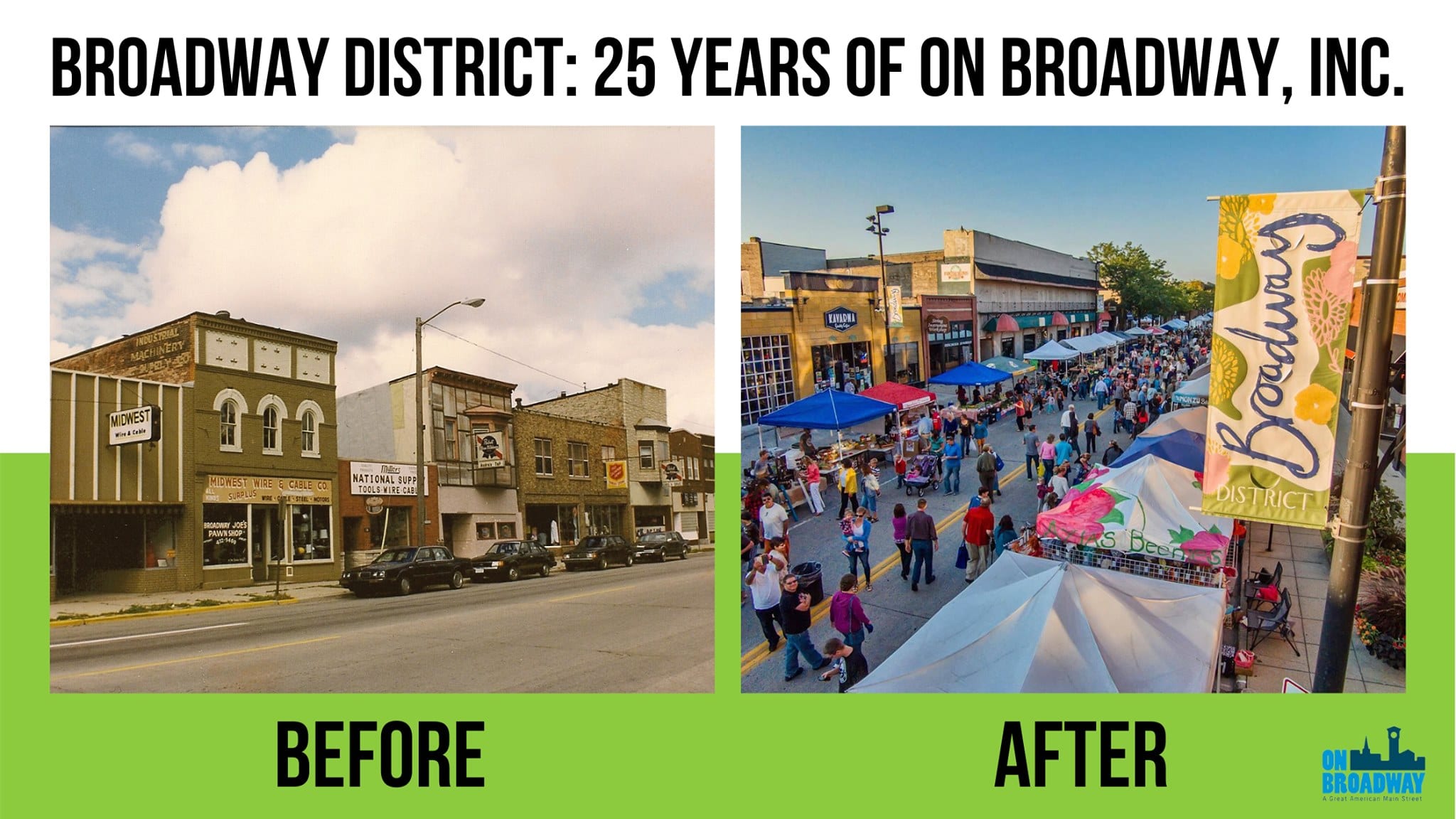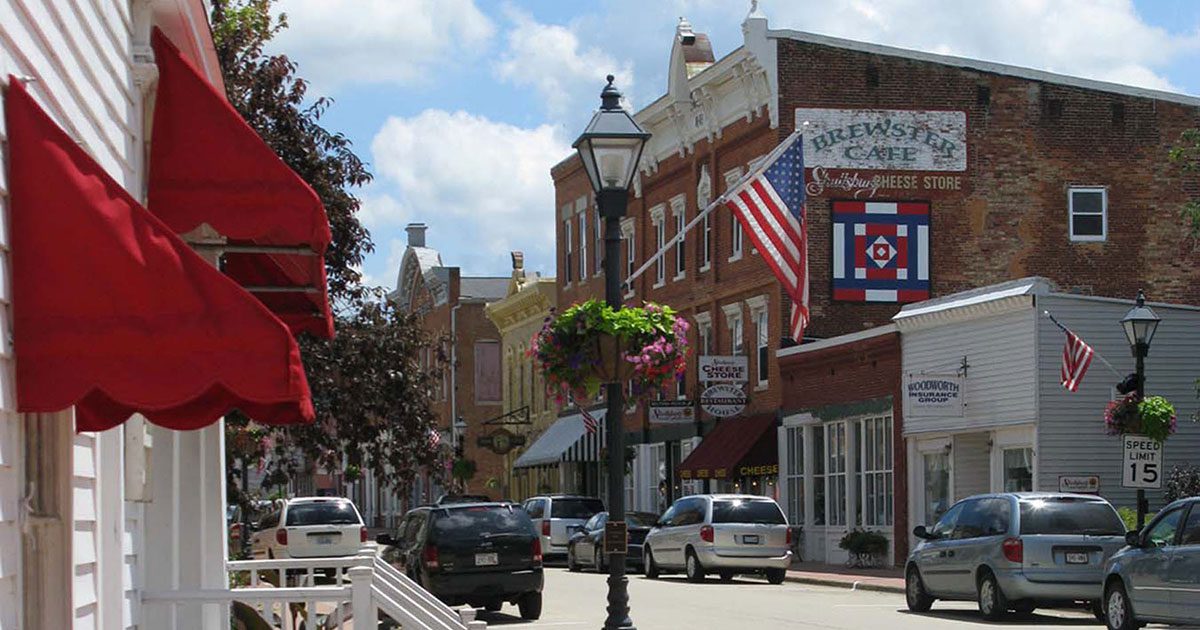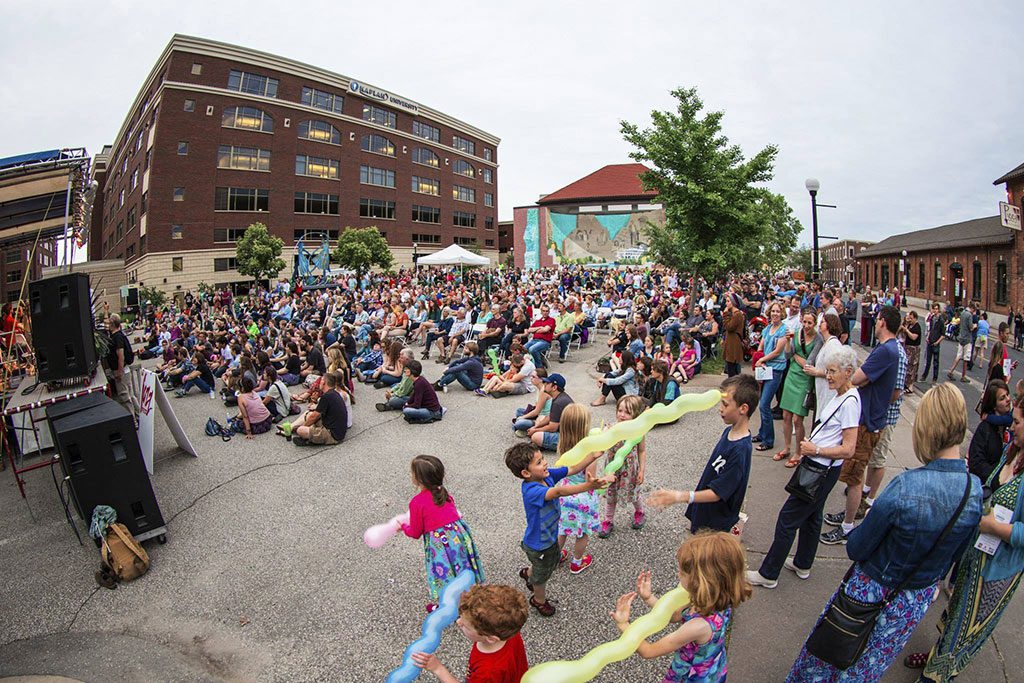
As we enter a new year, each of the stakeholder groups that are responsible for downtown revitalization have an opportunity to reflect on the gifts of 2020 and resolve to make changes that will make your organization and/or business more prosperous and effective in the coming year. Although 2020 was difficult for many, it did offer up many things to be grateful for, as well as laying bare areas for improvement. As an old English proverb says, “A good beginning makes a good end.” Taking steps now at the beginning of the year to ensure a more productive middle and end of the year—especially in a year of recovery, might make the difference between a transformative rebound year and a prolonged recovery.
This newsletter suggests three gifts of gratitude and five suggested New Year’s resolutions for businesses, organizations and individuals involved in downtown revitalization.
Businesses

Wisconsin’s small businesses demonstrated amazing agility and resourcefulness in 2020. Faced with new challenges and shifting economic and regulatory conditions, businesses rose to the challenge. Many businesses benefitted from increased consumer awareness of the value of supporting locally owned businesses, allowing them to build stronger relationships with loyal customers and local residents alike. Many were forced to take the leap into new territory, testing new strategies or stepping back to take a hard look at operations. While the circumstances around these changes weren’t ideal, refocusing on the basics will have a long-term positive impact on revenues. Similarly, many owners developed stronger partnerships with suppliers, vendors and local municipalities and civic organizations. The shared sacrifice and numerous local programs developed to support small businesses meant that connections and conversations between chambers/cities and businesses/landlords evolved rapidly in a way that it hasn’t in the past as local communities focused on supporting the local economy to weather then pandemic.
For 2021, small businesses can build on the learning and partnerships forged in 2020 and take small but concerted steps to become more resilient in the future:
- Touch base with your basics. The process of applying for grants pointed out the shortcomings or shortcuts present in many small businesses. Whether it was the lack of a written lease, missing tax returns or incomplete and mis-matched financials, many were missing one or more elements necessary to complete applications. Moving forward with a goal of complete accounting and legal basics in the new year can save significant work and mitigate other business risks in the future.
- Make permanent and impactful changes. Surveys of small businesses point to an average of 85% that anticipate making some permanent changes implemented in response to the pandemic. New services or practices such as curbside or private shopping, social media sales, reduced inventory or altered hours allowed businesses to experiment in ways that they likely never explored in the past. Many changes were positively received by customers or attracted new audiences and can be retained and expanded in the future.
- Invest in the future. Consumer expectations and practices have changed over the past year, including both accelerations of previous trends and newly adopted expectations. If you did not embrace new strategies for outreach or sales generation during the pandemic, or if you did so only haphazardly, invest time and dollars into making these systems work for you. Whether that means engaging a professional photographer, purchasing new equipment, upgrading your point of sales system or website, expanding your outdoor sales area or other tactics, plan to go into the 2021 spring sales season with a refreshed focus on investments that will generate a return in the future.
 Main Street Marshfield launched a fundraising campaign and grant program to
Main Street Marshfield launched a fundraising campaign and grant program to
help local businesses tackle necessary business investments
- Plan to plan. Everyone has been encouraged to work on their business, and not just in their business. By carving out some time in advance (perhaps during the slow late wintertime) to pre-plan marketing initiatives or social media posts, design window displays, test menu items or revamp your customer outreach efforts, your business can benefit.
- Connecting on a personal level with staff and customers will reinforce that sense of community that has emerged over the past year. Real and honest engagement to share how much community support has meant to you and your staff over the past year is important. Say thank you to those who have stepped up to help and recognize others in the community who have struggled alongside you over the past year. These personal connections create opportunities for future collaborations, provide invaluable marketing opportunities and ensure that your business retains its strengthened support system in the future.
Organizations

Civic, nonprofit and other community organizations faced a wholesale change in focus during 2020. Longstanding community events were cancelled or held virtually, individuals shifted their commuting and recreating patterns overnight resulting in fewer and/or different consumers present in the market, and many common community development funding sources were diverted to aid businesses and individuals in need. Many organizations are entering 2021 with depleted reserves and reduced staffing, yet the overturning of local norms creates opportunities to revamp and rethink events that have gotten stale, has forged closer bonds between nonprofits and their stakeholders, as these organizations provided critical technical and/or financial support to businesses and first responders, and has created partnerships between organizations that had previously been too busy to collaborate. In the coming year, organizations can build on these blessings by resolving to:
- Permanently let go of activities that no longer serve the mission. If there is an event or program that has run its course, use 2020 as a reset button to permanently eliminate or overhaul what you’re doing. Make room for and prioritize activities that build connections and benefit multiple stakeholder groups (i.e. events that generate retail sales).
 Creating a visual list of tasks and projects by focus area can help focus efforts on items
Creating a visual list of tasks and projects by focus area can help focus efforts on items
that will further the mission and avoid getting bogged down in extras
- Lean into the pivot. Organizations mastered many new forms of communication in 2020. Use what was learned to make your activities accessible to new audiences. Live streamed events can reach those with limited mobility or those who have left town, building a following beyond your immediate crowd. Similarly, supplementing in-person activities with virtual options can keep stakeholders engaged between larger events and cater to audiences less likely or able to attend in person. This strategy can be applied either to committee or project meetings as well as educational events. As a bonus, virtual meetings tend to be more streamlined and efficient, potentially enabling greater productivity.
- Set small goals. Our partner organizations are no strangers to big audacious goals. However, coming off 2020, it may be overwhelming to think about how to tackle the new challenges introduced by COVID while also resuming regular activities. Instead of thinking of big picture objectives, identify tasks (and ideally champions for each) that can be accomplished in the first 90 days of 2021 that will set the stage for the rest of the year.
- Show gratitude. Make a point of recognizing the businesses and individuals that support you. Set a goal (as a board) of checking in with all contributors personally to thank them, better understand their connection to the organization and its mission and take the opportunity to share with them your recent achievements and future goals. These personal discussions are most likely to lead to deeper connections.
 The best thank you messages highlight shared values between an organization and its stakeholders
The best thank you messages highlight shared values between an organization and its stakeholders
- Make downtown the front door for your community. Demonstrate with design and signage that customers, residents and workers are welcome and appreciated. Think of sidewalks and storefronts as the welcome mat/front door for your house and public parks as the backyard. With everything you do, think of being a good host to your visitors, and offer/make available all the amenities you would a guest in your home (restrooms, water, seats, food). Giving people the gift of space, personal choice and comfort is especially desirable in a post-COVID mindset, but always appreciated by visitors.
Directors and board members

Nearly every community saw a greater turnover in staff and board members during the past year. This presented a challenge for organizations striving to maintain and enhance programs and activities during a crisis. However, retaining momentum and communications in the face of a constantly changing environment is critically important. Serving as a consistent source of reliable and timely information for stakeholders is a critical role for community organizations, and one that was strengthened in 2020.
At the same time, new leaders bring in new ideas and relationships, and organizations can take advantage of this to tackle lists of to do items that may have been languishing on checklists for months or years. Viewing the organization, its communications and projects from a new perspective can also shed light on perceptions within the community and messaging that is most relevant and impactful to target audiences. Most importantly, board members and directors can head into the new year with the knowledge that when working together can overcome nearly any challenge.
To retain that sense of empowerment and perspective, directors and board members should consider the following strategies:
- Develop a practice of identifying/demonstrating daily gratitude. In addition to identifying things you are personally grateful for, make a point of recognizing the impact of another individual on your district and organizational operations. If you are a board member, expressing even small acts of gratitude to staff regularly can aid retention—research shows employees with some form of weekly recognition feel more relevant and appreciated. Similarly, small personal acts of sincere gratitude towards sponsors and donors are more impactful than routine thank you letters and sponsor packets.
 Wausau’s Love Letters program allowed customers to recognize the
Wausau’s Love Letters program allowed customers to recognize the
businesses and individuals that make the River District special
- On a daily and ongoing basis, make sure to manage the tasks that fall on your plate. To make this easier, refine your work or project plan to define expectations and deadlines, and let people rise to the occasion. To start, identify one ongoing task that tends to clog up your calendar or preoccupy your time, and find someone else to adopt it. Event photographer, social media liaison, envelope stuffer, delivery runner, etc.
 By having a firm work plan and goals, community groups are able to identify ways they
By having a firm work plan and goals, community groups are able to identify ways they
can contribute to the district, such as with this Eagle Scout trail improvement project
- Fix one thing. Identify one thing that creates a small annoyance every day and take steps to address it. A broken printer? Lack of paperclips? Terrible desk chair? Poor lighting? Find a solution and implement it this week. Taking control over something that impacts your life on a daily basis can have a dramatic impact on your daily outlook and overall productivity. If you are a board member, empower yourself to take on one tasks that has been sitting on the back burner for months or years. Knocking out the creation of a volunteer database, editing an email list, completing a property inventory or developing a marketing calendar might take only an hour or two, but can save hours of future discussion and frustration as an outstanding to do item that is keeping another project from moving forward effectively.
- Identify your stretch goal for the year. What is one project or initiative that you can take on that will help you grow personally and professionally in the coming year. Are there skills you’d like to build? Relationships you’d like to strengthen? Finding ways to challenge yourself within the bounds of the organization’s mission benefits everyone. As a bonus, Wisconsin Main Street programs receive points towards accreditation by including a stretch goal set by the director in their work plan.
- Spread the word. Many organizations tend to speak to the same stakeholder audiences regularly, while others in the community might be unaware of their efforts and impact. Expanding the circle of supporters creates a direct pipeline to future volunteers, donors or even business or property owners. Take time this week to tell two new people about your organization. Use the conversation as an opportunity find out what those people already knew/perceived about the organization and use this information to help shape future marketing/outreach.
 Green Bay’s On Broadway district launched a community-wide crowdfunding campaign
Green Bay’s On Broadway district launched a community-wide crowdfunding campaign
highlighting the positive aspects of the district to engage new donors






